Protein is super hyped in the fitness industry for a good reason, and everyone needs a lot more than we think. This article explains what protein is and why it’s so crucial to eat enough of it. Eating a protein-centric diet will change your body composition, promote fat loss, and help you eat less.
What Are Proteins?
Protein is an essential macronutrient that is made up of chains of amino acids. There are nine essential amino acids, meaning that they are not synthesized by mammals and need to be eaten, and eleven non essential amino acids that mammals can produce themselves. We need protein in order to grow and maintain tissue, and we can only get protein through our diet.
What Is The RDA For Protein?
RDA stands for Recommended Daily Allowances, which is 0.36 grams per pound. So if you’re 150 lbs, that’s 54 grams of protein per day. However, we need to unpack the history of the RDA and what it measures now. The first edition of the RDA was published in 1943 during World War II with the objective of “providing standards to serve as a goal for good nutrition.” In short, the RDA was established to make sure people were being properly nourished during a time of food shortages and rationing. The RDA, is on its tenth edition, and has since been used as a gold standard in a wide variety of ways, but primarily as a way to establish adequate nutrition standards for various populations. This number is not optimal, but marks the minimum protein requirements to live.
For optimal health, especially if you’re an active person in any sort of capacity, .8-1 gram of protein per lb of body weight per day is optimal. A quote from a 2016 study states:
“A growing body of research indicates that protein intakes well above the current Recommended Dietary Allowance help to promote healthy aging, appetite regulation, weight management, and goals aligned with athletic performance. Higher protein intakes may help prevent age-related sarcopenia, the loss of muscle mass, and strength that predisposes older adults to frailty, disability, and loss of autonomy. Higher protein diets also improve satiety and lead to greater reductions in body weight and fat mass compared with standard protein diets, and may therefore serve as a successful strategy to help prevent and/or treat obesity.” (Phillips, 2016)
If you want to be healthy, age well, have a healthy body composition, maintain muscle mass as you age, be injury free, and not lose autonomy as you get older, you need to strength train and eat more than the RDA states. There’s also research that indicates more muscle mass is preventative against cancer
Should You Eat Meat?
In order to build muscle and see positive health benefits from your diet, you need to eat protein. Try making your diet protein-centric. And the best way to get enough protein that has all 9 essential amino acids is from eating meat.
There has been a controversy over red meat being correlated to cancer in the American diet for years now. However, a recent epidemiological study (a study of an entire body of academic research) debunked this correlation because it’s impossible to isolate the other variables in the standard American diet like low vegetable/fiber intake, processed sugar intake, alcohol intake, and processed food consumption, from the studies that correlated red meat to cancer.
Humans are omnivores, which means a diet with both plants and animals is optimal for health. In fact, meat is one of the most easily digestible and assimilable foods we can eat. When people are working through food allergies, they usually go on an elimination diet that focuses on meats and bone broths.
The overarching meat industry does not take care of the animals they produce. It’s ideal to source your meat from local ranchers and farmers that practice regenerative agriculture, take care of their animals, and participate in stewarding their land. When you buy meat from these local producers, you’re actually helping support food systems that are beneficial to the entire environment. For example, when farmers and ranchers properly spread animal manure, they are helping sequester carbon from our atmosphere.
However, too much of something is too much. Eating just meat long term is not sustainable, and you’re missing out on minerals, vitamins, fiber, and carbs which are also important in athletic performance and overall health.
Vegan Proteins
If you are plant based, you need to plan your meals to eat enough protein. Ideally, you want to make sure a meal is composed of complete proteins that contain all 9 essential amino acids. The few plants that have all 9 essential amino acids include quinoa, buckwheat, hemp seeds, chia seeds, and spirulina. There are other food combinations that can create all 9 amino acids when eaten together, such as rice and beans, wheat toast and peanut butter, hummus and wheat pita bread, the three sisters (beans, squash, and corn), and oatmeal with seed or nut butter.
However, animal-based proteins are of higher quality, as they contain higher proportions of essential amino acids compared to plant-based proteins. So if you’re a vegetarian or vegan, it’s important to combine certain protein sources and be knowledgeable about what you eat, so you get everything you need.
Meals With High-Quality Protein
Again, the best protein sources you can eat are animal proteins, which include meats, dairy, and eggs, & fish. Some vegan sources with the most protein are beans, quinoa, tofu, seitan, chickpeas, and pumpkin seeds.
No matter how you go about getting your protein, getting enough of it will absolutely change your body composition. Eating protein promotes fat loss because you’ll gain muscle, which means you’ll have a lower body fat percentage (muscle burns fat). Protein also promotes satiety, which means you’ll eat less.
Here are some meal ideas to get the maximum amount of protein in:
Breakfast:
- 4-5 eggs w/ cheese on some toast
- Yogurt mixed with some protein powder and/or honey
- Oatmeal mixed with protein powder
- Cottage cheese with fruit
Lunch/Dinner:
- Ground beef or any ground meat mixed with rice and veggies of choice
- Crockpot stew (stew meat and any veggies you have around)
- Shredded chicken salad
- Ground beef into burgers and fries in the air fryer
Quick meals:
- Kettle & Fire bone broth soups with added chicken breast
- Smoothies – it’s easy to add in some protein powder and yogurt and hide with other flavors added in like fruits, nut butters, honey, etc – bonus: add some veggies in
Final Thoughts On Protein & Should You Eat Meat
Eating more protein is like the fairy tale diet pill that everyone is looking for. The more protein you eat, your overall health will improve and you will see a positive change in your body composition, whether you’re strength training or not. Every meal and snack you eat should be protein-centric, and it doesn’t matter if you eat meat or not. Yes, eating meat is the best way to get all 9 essential amino acids. However, if you’re plant based, proper planning and education paired with the same protein-centric outlook on food will set you up for success.
Want to learn more about how eating protein can improve your health and body composition? Listen to the Stronger Than Your Boyfriend Podcast, episode 132: All About Protein and… Should You Eat Meat?
Sources Cited:
Phillips, S. M., Chevalier, S., & Leidy, H. J. (2016). Protein “requirements” beyond the RDA: implications for optimizing health. Applied physiology, nutrition, and metabolism = Physiologie appliquee, nutrition et metabolisme, 41(5), 565–572. https://pubmed.ncbi.nlm.nih.gov/26960445/
Mazzilli, K. M., Matthews, C. E., Salerno, E. A., & Moore, S. C. (2019). Weight Training and Risk of 10 Common Types of Cancer. Medicine and science in sports and exercise, 51(9), 1845–1851. https://www.ncbi.nlm.nih.gov/pmc/articles/PMC6697215/



